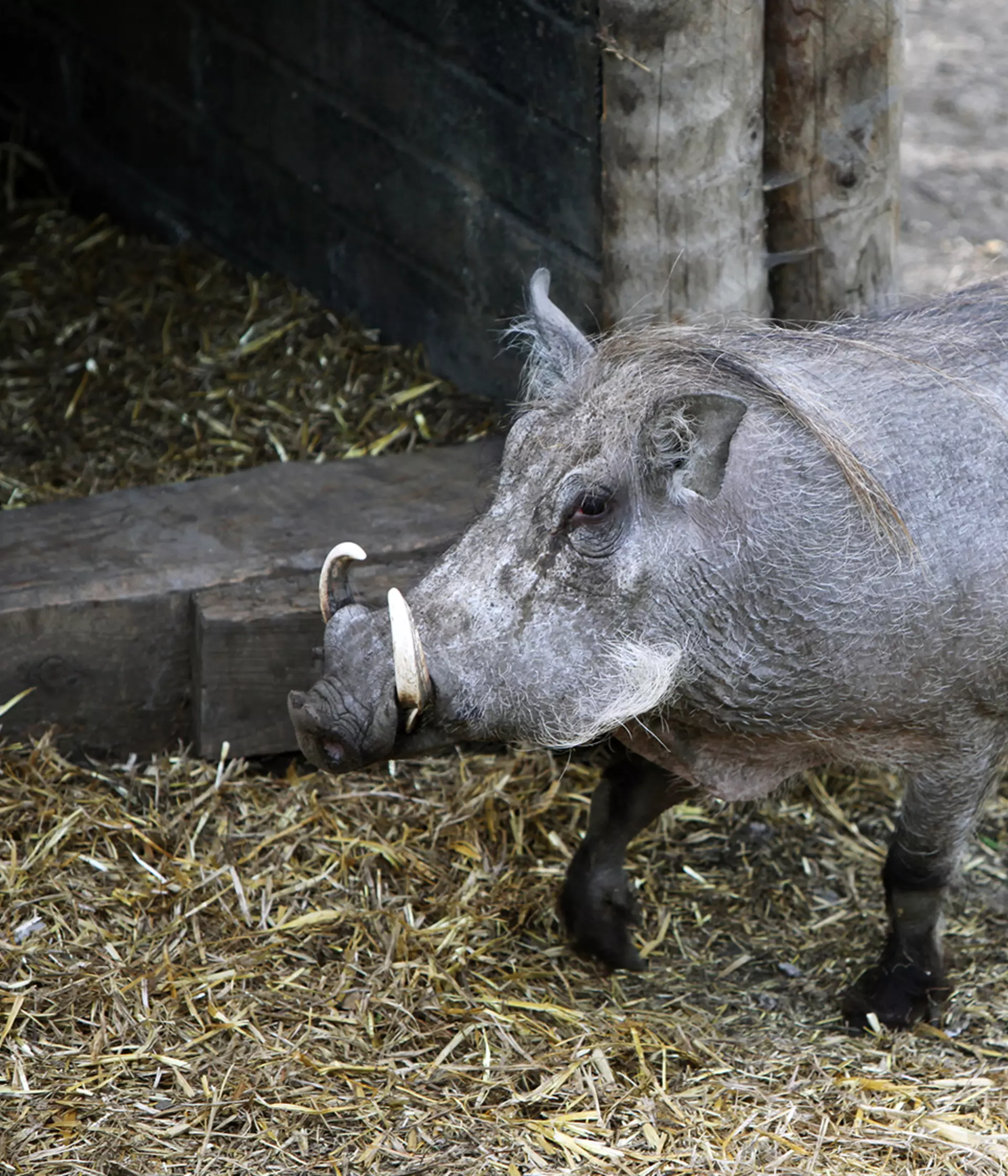Area of zoo
Pink Zone
Enclosure status
Open
IUCN status
Least Concern
Scientific name
Phacochoerus africanus
Order
Cetartiodactyla
Type
Mammals
Family
Suidae
Region
Southern Africa
Habitat
Grassy plains and open woodland
Warthog facts
- They use natural holes or those left by aardvarks to hide in. Going in backwards ensures that their tusks are first out to defend themselves.
- When times are tough they can go up to several months without water; however they preferably spend the majority of their time grazing and wallowing in mud to relieve themselves from the constant irritation of insects. Often birds will help them with this battle sitting on their backs and feeding off.
What do warthogs look like?
These wild pigs have four sharp tusks, two upper that are large and curved and two lower and sharper that they use to dig up roots and bulbs. They have sparse hair in patchy tufts but are largely bald. Both males and females have ‘warts’ that are protective bumps on their faces giving them their name. Males have bigger ‘warts’ to cushion blows during fights with other males.
What do warthogs eat?
Grasses, roots, fruits, bulbs and carrion
Warthog threats
They are hunted for food by humans, crocodiles and big cats. They can jump over two metres into the air trying to avoid danger.
Animal experiences at London Zoo
Make unforgettable memories in the heart of one of the world’s most vibrant capital cities, from feeding penguins, meeting monkeys or coming face-to-face with the world's tallest animal!
